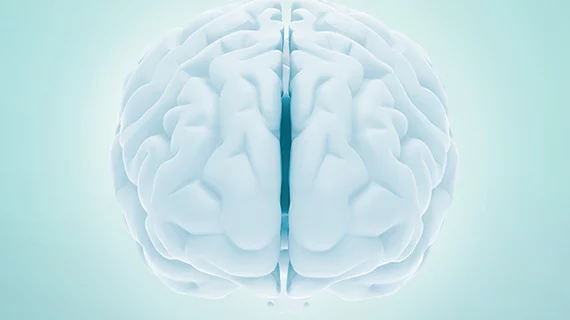MRI detects brain damage linked to obesity in teens
Research presented at the Radiological Society of North America’s annual meeting in Chicago this month linked obesity to MRI-detected brain damage in young people.
Pamela Bertolazzi, a biomedical scientist and PhD candidate at the University of Sao Paulo in Brazil, and colleagues compared diffusion tensor imaging (DTI) results from 59 obese adolescents and 61 normal-weight adolescents in an effort to determine whether obesity increases a teen’s likelihood of experiencing white matter damage. Recent evidence suggests obesity triggers inflammation in the nervous system that could lead to that kind of widespread damage, potentially affecting key areas of the brain responsible for emotion and control.
Bertolazzi et al. focused on fractional anisotropy (FA), a measure of white matter damage derived from DTI, for their research, calculating FA values for all 120 study participants. They found a reduction in FA values—indicative of increased damage in white matter—in obese adolescents’ corpus callosum, a bundle of nerve fibers that connect the left and right hemispheres of the brain.
An FA decrease was also noted in obese patients’ middle orbitofrontal gyrus, a region of the brain responsible for emotional control and the reward circuit.
“Brain changes found in obese adolescents related to important regions responsible for control of appetite, emotions and cognitive functions,” Bertolazzi said in a release.
She said none of the brain regions in obese adolescents demonstrated increased FA, which would have been indicative of less white matter damage. However, the worsening condition of many patients’ white matter could be linked to higher levels of insulin and leptin, hormones responsible for regulating energy levels, fat stores and blood sugar.
“Our maps showed a positive correlation between brain changes and hormones such as leptin and insulin,” Bertolazzi said. “Furthermore, we found a positive association with inflammatory markers, which leads us to believe in a process of neuroinflammation besides insulin and leptin resistance.”
Bertolazzi said further studies are needed to confirm her team’s results and determine whether this inflammation in obese adolescents is a consequence of structural changes in the brain. She said she and her colleagues are looking to repeat brain MRIs in their study cohort after weight loss treatment, to see whether the brain changes they observed can be reversed.

